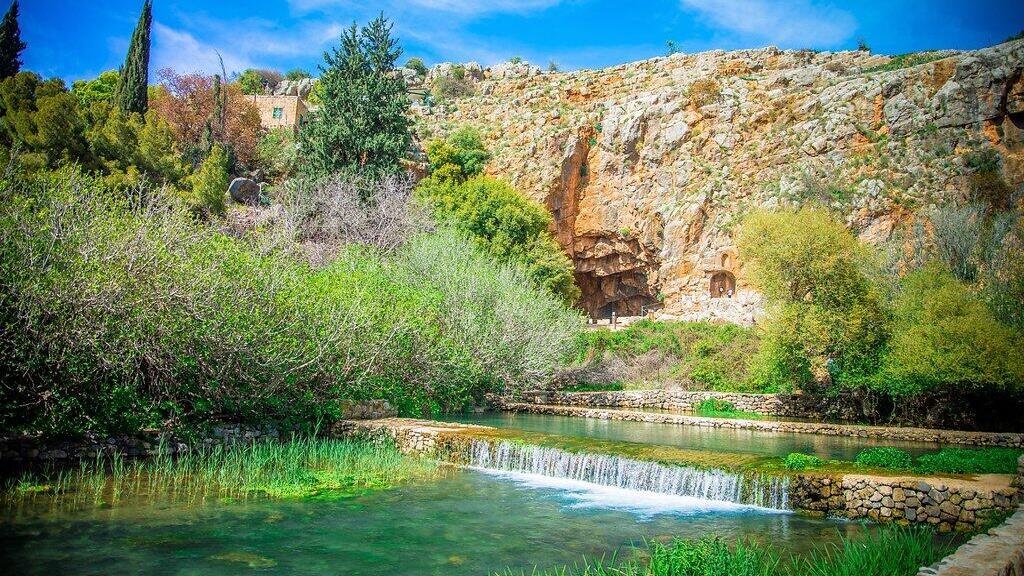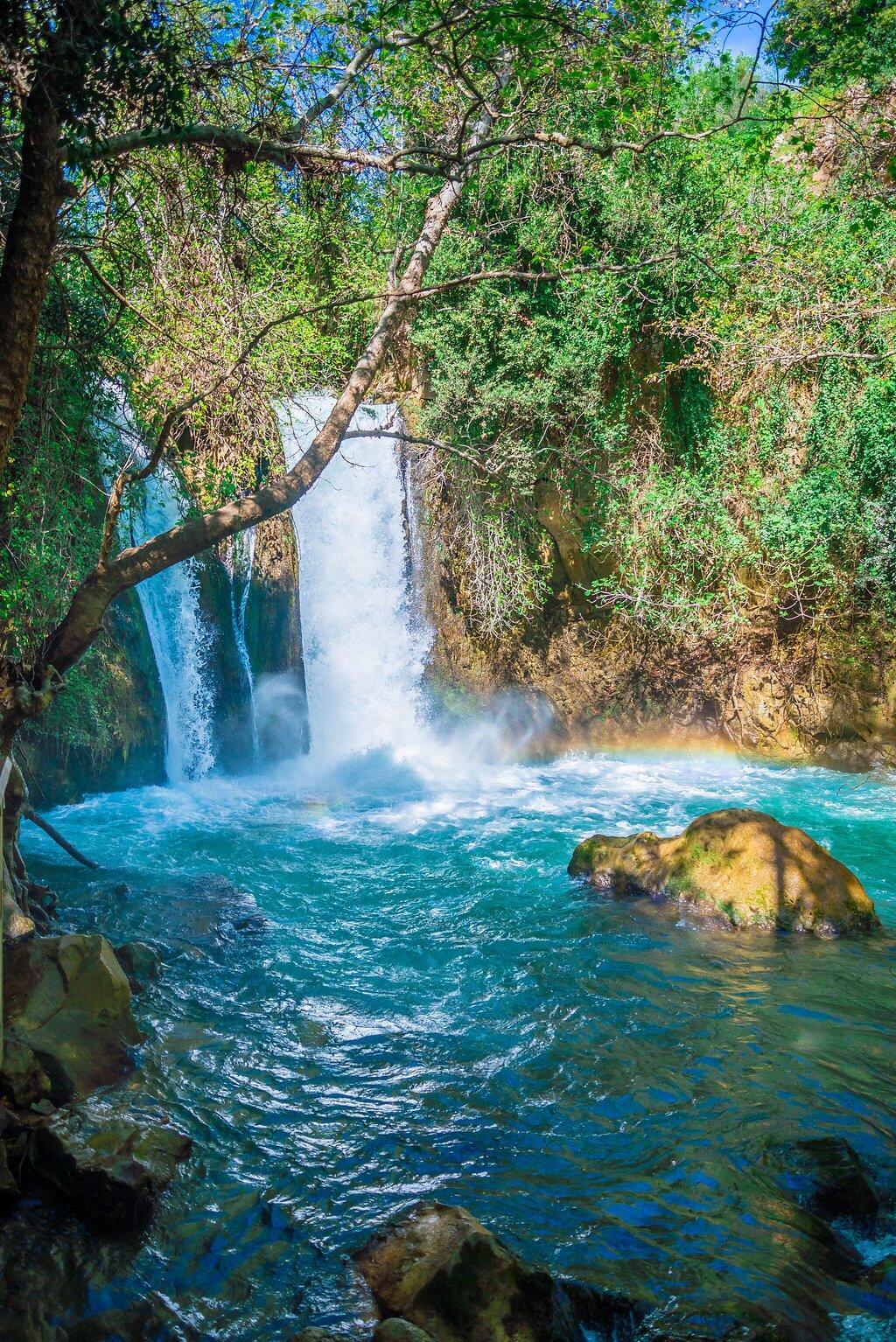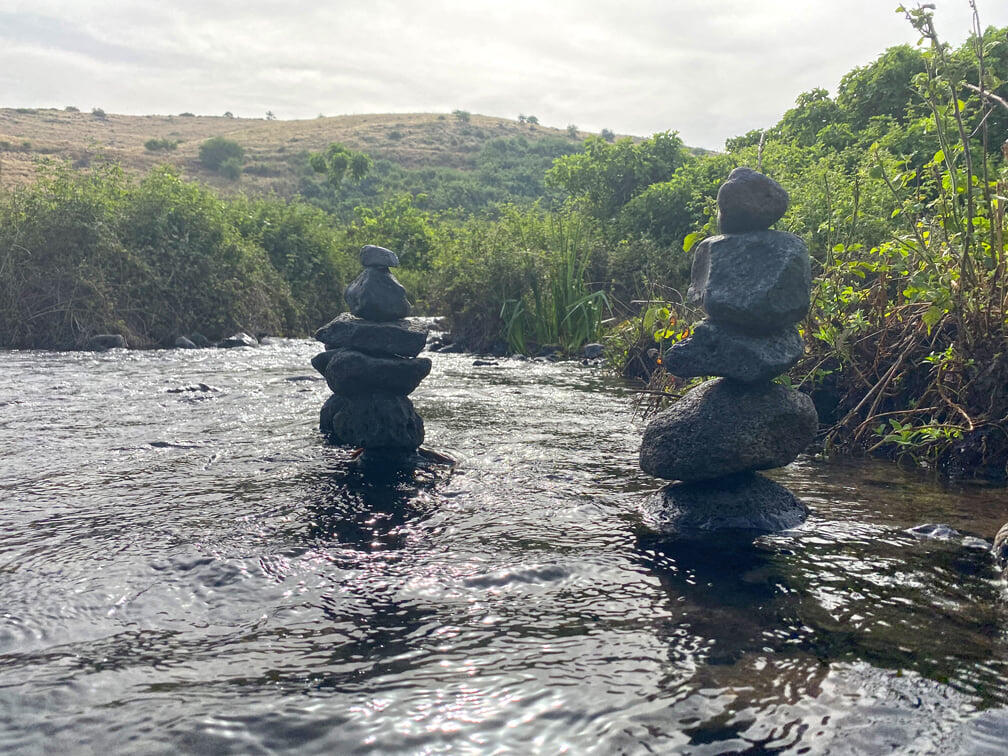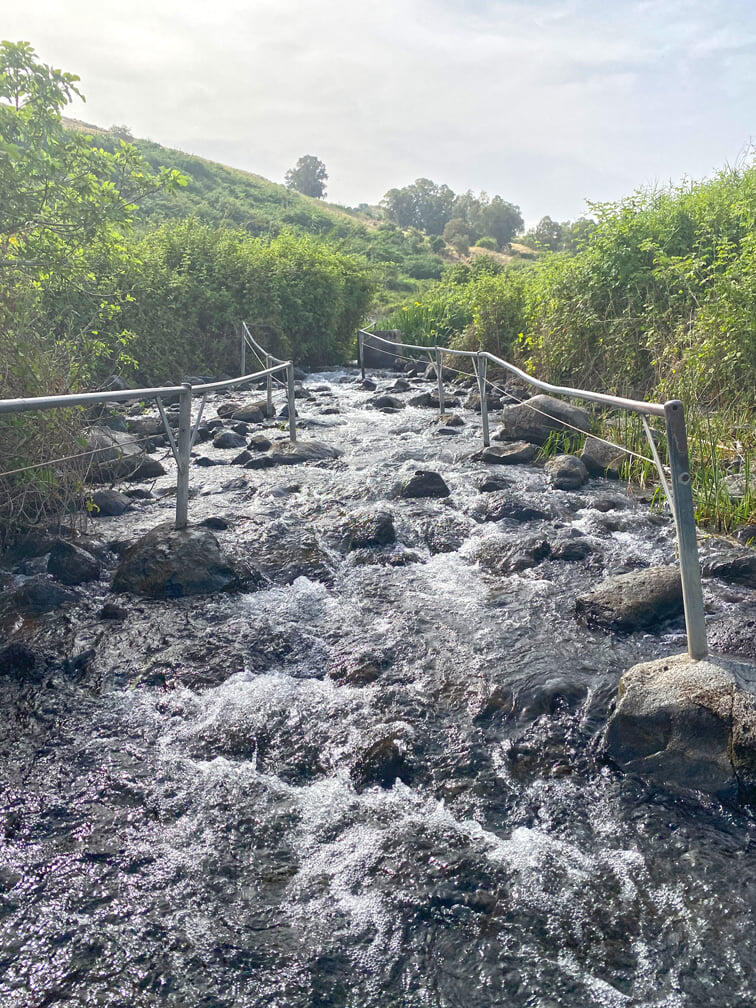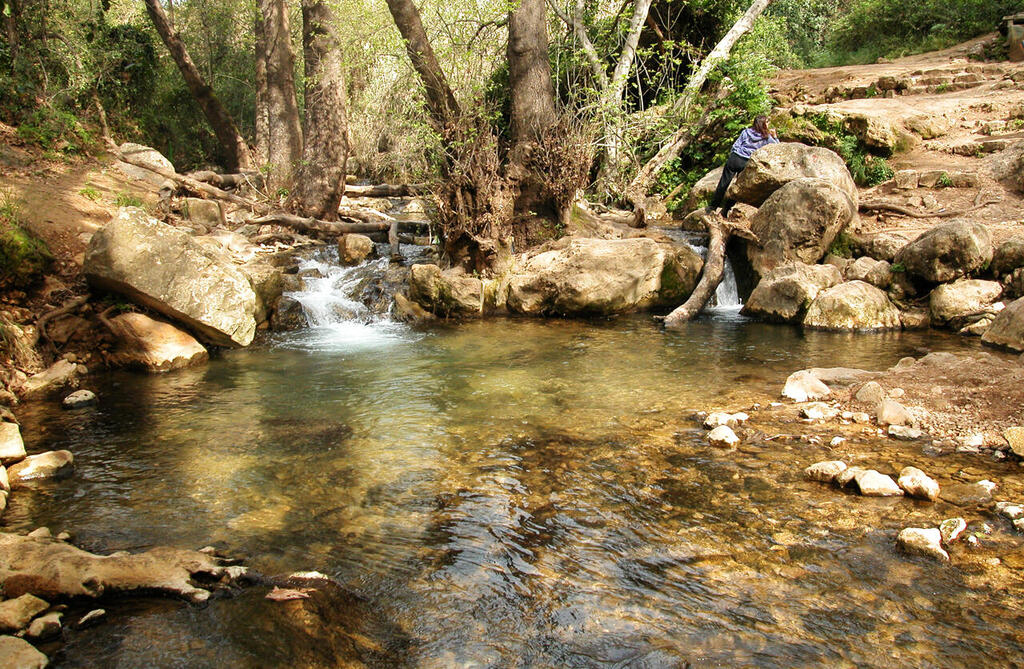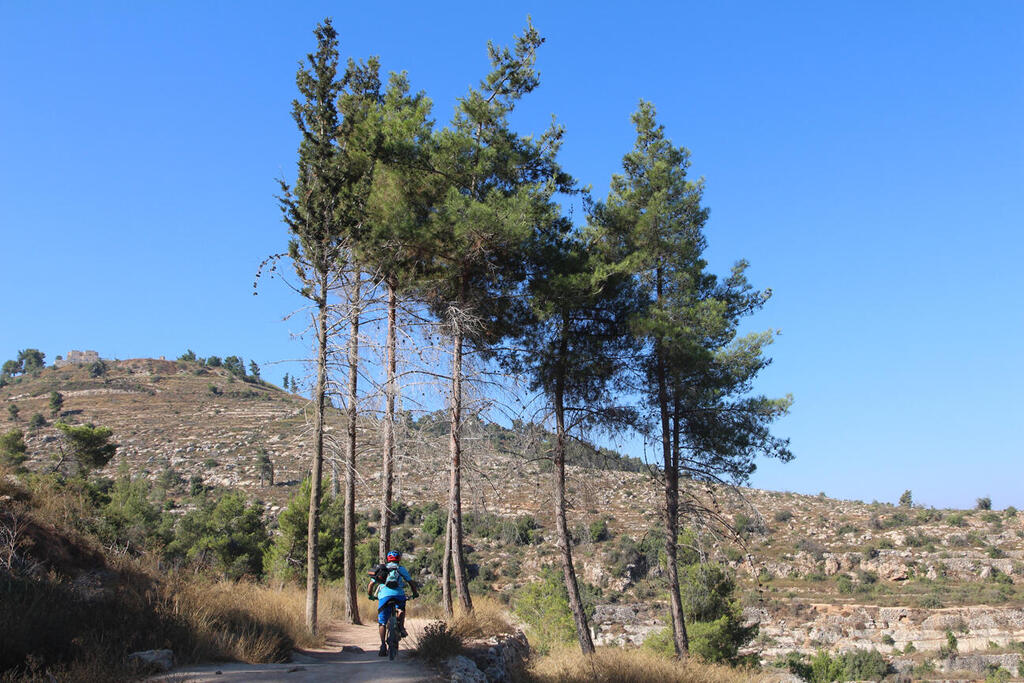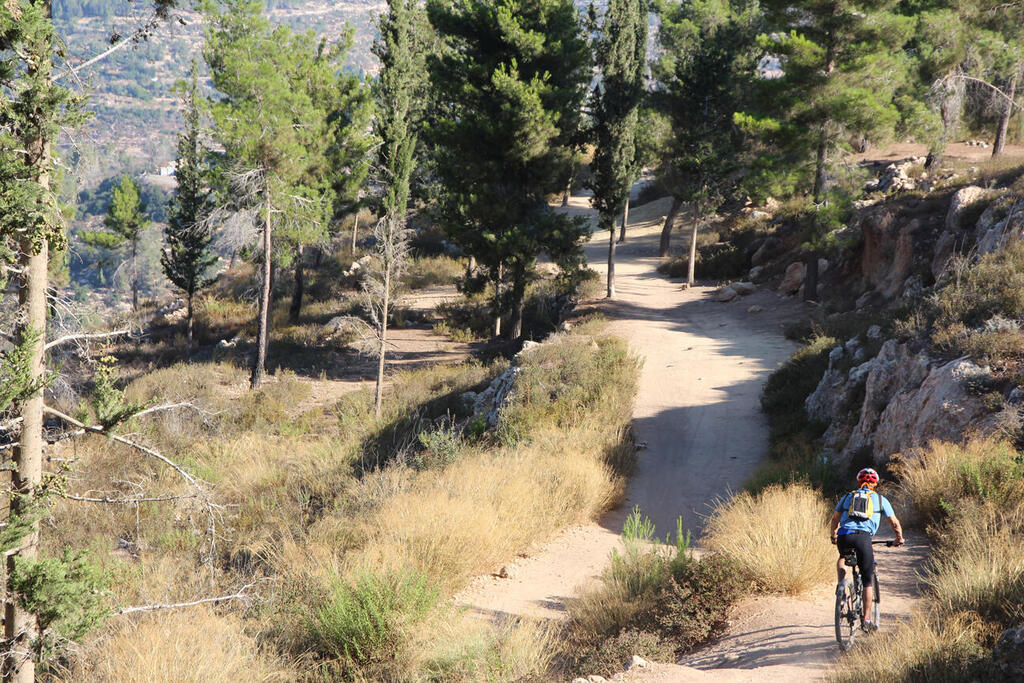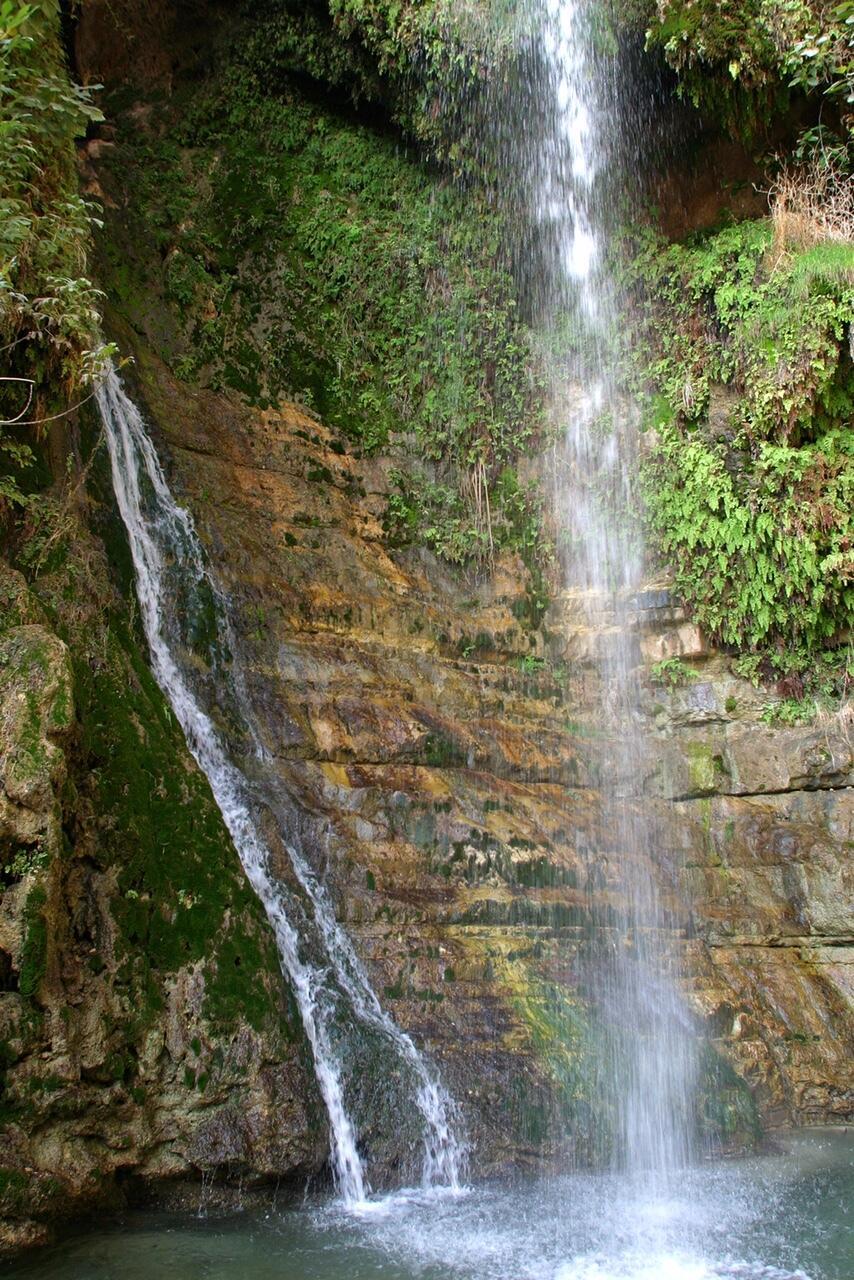Getting your Trinity Audio player ready...
Summer vacation has arrived, the heat is intense, and kids are climbing up the walls at home - this is an excellent chance to get outside and discover some nature trails that are perfect for this weather: hikes that offer water, shade, and breathtaking scenery. These trails are not too strenuous or long, which makes them ideal for families.
Read more:
The Banias Nature Reserve
In Mount Hermon, the snowmelt during winter mostly seeps into the ground instead of flowing on the surface in streams. These waters emerge from springs beneath Pan's Cave and feed the Hermon Stream.
Within the Banias reserve, the stream cascades down the most powerful waterfall in Israel, plunging about 10 meters into a picturesque pool enveloped by lush vegetation, creating a deafening roar. The Nature and Parks Authority has constructed a 100-meter-long suspended pathway, offering visitors a close encounter with the gushing water and even a chance to get splashed by it.
Within the reserve, you have the opportunity to explore a cave that once formed part of the temple dedicated to Pan, the Greek god of shepherds and their flocks. In Roman mythology, he was known as Faunus. The site's name, Banias, is derived from an Arabic corruption of his name. Adjacent to the cave stands the remains of a temple constructed by Herod The Great to honor Emperor Augustus.
Ein Notera
The western slopes of the Golan Heights are home to numerous springs that once nourished Hula Lake. Now, these springs feed the Jordan canals in place of the vanished lake. Among them, Ein Notera stands out, inviting travelers to enjoy its revitalizing water pools, picturesque waterfall, and serene walking paths along the flowing stream.
Starting from the Ein Notera parking lot near Route 918, head south along a broad dirt path highlighted with green markings for approximately 800 meters. After a little over a hundred meters from the parking lot, you'll encounter a stream channel that you must cross by walking through the water. Continue along the wide path, where you'll find cattle grazing on the sides. Eventually, you'll reach a tranquil eucalyptus grove centered around a large, shady pool, perfect for a refreshing swim.
The reserve's water source originates from a substantial "wall spring," generating around 650 cubic meters of water per hour, enabling a thriving ecosystem to flourish. To safeguard this exceptional habitat, the Nature and Parks Authority has carefully designated a marked walking path within the water, ensuring the preservation of its distinct natural values. To maintain the delicate balance, it is crucial to remain within the boundaries of the iron railing while exploring the reserve.
For those undaunted by a damp yet pleasantly undemanding hiking trail, the path meanders upstream from the pool. Initially, the waters may reach waist height, but as you progress, the stream becomes shallower. Ascending the river channel, surmounting a few boulders, and passing the area adorned with cones, the verdant path transitions to a drier terrain. Even in this section, the presence of the spring water's flow beneath the basalt layer beneath our feet is evident.
The climb gradually steepens, accompanied by fig trees and reed plants, culminating in a picturesque waterfall seemingly emerging from within a fig tree. Upon drawing nearer, one can discern that the waterfall is, in fact, a product of the piped spring water channeled from an upper concrete reservoir utilized for agricultural purposes. Any surplus water is thoughtfully returned to nature, coursing through the reserve's landscape.
Amud Stream
It is the loftiest among the country's streams, gracefully flows all year round. Its origins lie in Upper Galilee, nestled between the majestic Mount Meron and the ancient city of Safed. Spanning approximately 25 kilometers, the stream finds its tranquil end in the embrace of the Sea of Galilee. The stream garners its name from a towering rock, majestically resembling a stately column, overlooking one of its streams near Kibbutz Hukok.
Venturing into the stream's upper realm, where it merges with the Meron stream, unveils a meticulously managed nature reserve. The sanctuary hosts a symphony of several springs that gracefully nourish the stream, nurturing crystalline pools of water and adorned cliffs sheltering lush groves. Traces of ancient settlements whisper stories of time long past.
A broad, ruby-hued path, elegantly marked in red, guides visitors from the reserve's entrance to the Ein Notera police station. This historic British establishment was erected during the "Arab Revolt" (1936-1939) to safeguard the pumps drawing water from the bountiful Ein Yakim spring, once a vital source of water for the venerable city of Safed.
Upon converging with "Israel National Trail", veer right and proceed downstream until the paths coalesce near the enchanting Ein Yakim. There, an enchanting aqueduct emerges from the spring, and your journey will be guided along a path adorned with a soft azure hue, gently leading to the nearby pools.
Along this scenic route, you'll traverse a captivating old and lovingly restored orchard, offering insight into the time-honored methods of traditional mountain agriculture. The essence of yesteryear is palpable, as the path weaves past the fulling building, once an essential hub where the Jews of Safed skillfully processed wool for the flourishing textile industry that thrived during the vibrant days of the 16th century.
10 View gallery
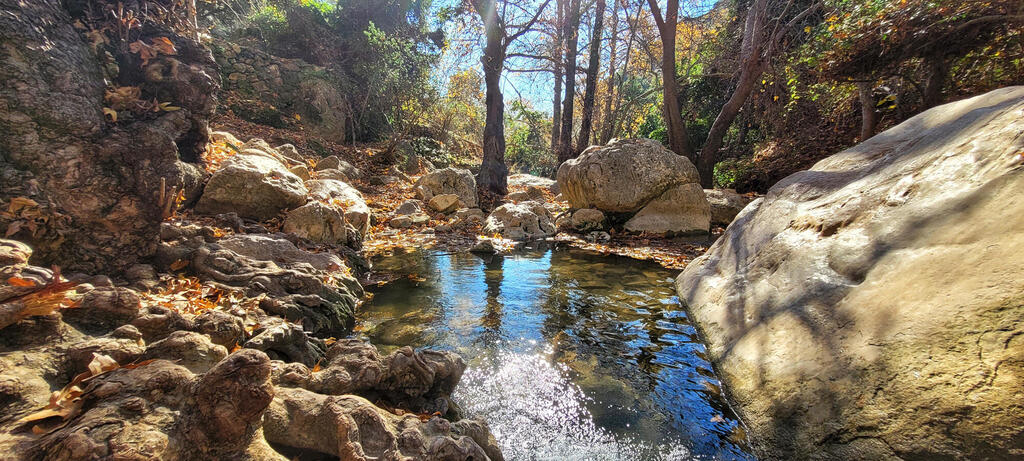

A great place for meditation or just relaxation
(Photo: Yaniv Cohen, Nature and Parks Authority)
The limpid and inviting pools provide an idyllic sanctuary for a leisurely respite, beckoning travelers to take a few refreshing dips. They also signify the conclusion of this captivating journey. To commence the return to the starting point, follow the trail adorned with the sleek black markings, located alongside the Meron Stream. As the path ascends, you'll be reunited with the red trail near the charming Ein Yakim.
Conveniently adjacent to the reserve lies a meticulously managed overnight parking lot, offering a tranquil space where tents can be pitched for a nominal fee. Here, amid nature's embrace, you can find solace and serenity under the night sky.
Aminadav Forest
A forest stretching 1,730 acres, the conifers blend harmoniously with the native trees of the natural forest, creating a green belt that stands as a significant open space cherished by the residents of Jerusalem. Inside the forest, you'll discover various attractions, including the famed Yad Kennedy monument and the poignant piano keys memorial in honor of the esteemed pianist Arthur Rubinstein. Additionally, there are convenient road parking lots, intriguing antiquities sites, and inviting cycling routes to explore.
Within this serene woodland lies the "Spring Trail," thoughtfully designed to guide you along the enchanting springs that gently flow from the southern slope of Mount Aminadav. The trail offers a pleasant downhill journey, suitable for families with children over 10 years old, making it a delightful and accessible adventure.
We shall embark on a delightful journey amidst the captivating terraces, bearing witness to the remnants of ancient mountain agriculture. After covering approximately half a kilometer, a series of quaint small caves, etched into soft yellowish rock, shall unfold before us. From these caves emerge partially constructed holes, each telling a story of its own.
In the proximity of the first cave, a stone will catch our eye, adorned with a circular trough, ingeniously employed for watering flocks of sheep. The resourceful use of spring water is evident in the two artfully constructed ponds located to the left of our path.
One of the caves, stretching impressively for about 15 meters, remains remarkably well-preserved. This intriguing passage emerges from the side of the mountain, gracefully passing beneath the pathway, only to reappear on the other side in an exquisite display of nature's artistry.
Approximately 300 meters from Uzi Springs, located on the northern tip of the Aminadav community, we encounter Ein Tamar, a charming little spring dedicated to the cherished memory of the late Tamar Natan, who tragically lost her life during a journey to Bolivia in 1996. This spring gracefully emanates from a hole into a pool dating back to the Byzantine era. Remarkably, remnants of the original plaster still adorn the pool's sides, hinting at its ancient origins.
Keen observers may notice small circular spaces carefully carved into the pool's eastern side. Several researchers have proposed that these spaces served as spawning sites for minnows, suggesting that the pool was once used as a fish breeding ground during the Byzantine period. Notably, the site also reveals the remains of a substantial public building from the same era, speculated to be either a church or a monastery, adding further historical intrigue to this remarkable location.
Nahal David
The Ein Gedi Reserve stands out as one of Israel's most remarkable and cherished natural treasures. Embracing the largest oasis in the country, it boasts a breathtaking landscape comprising perennial streams cascading through canyons, intertwined with majestic cliffs that reach for the sky. Within this enchanting sanctuary, visitors can revel in the beauty of pristine springs, captivating waterfalls, and the captivating sight of goats and rock deer roaming at the foot of the cliffs, all serenaded by the gentle flow of streams.
Among the reserve's captivating trails is the Nahal David route, a journey through one of the Judean desert's most spectacular streams. Though one of the shorter streams, stretching for a mere ten kilometers, its allure is unrivaled. This picturesque stream bears the name of the illustrious King David, who once sought refuge in the area of Ein Gedi, where the stream meanders gracefully through the landscape, adding a touch of historical significance to its charm.
As visitors continue their journey along the road, they are greeted with an awe-inspiring and breathtaking sight - a series of cascading waterfalls forming the lower part of the stream. The journey begins with a small waterfall, where the residents of Kibbutz Ein Gedi draw water for their use, and it culminates in the grandeur of the remarkable 30-meter-high David Waterfall, sometimes referred to as the "Shulamit Waterfall."
Upon reaching the route's summit, a spacious pool awaits, inviting bathers to revel in its refreshing waters. Nearby, a shaded sitting area thoughtfully nestled under a rock ledge offers a serene spot for relaxation and contemplation amid nature's serenity.
10 View gallery
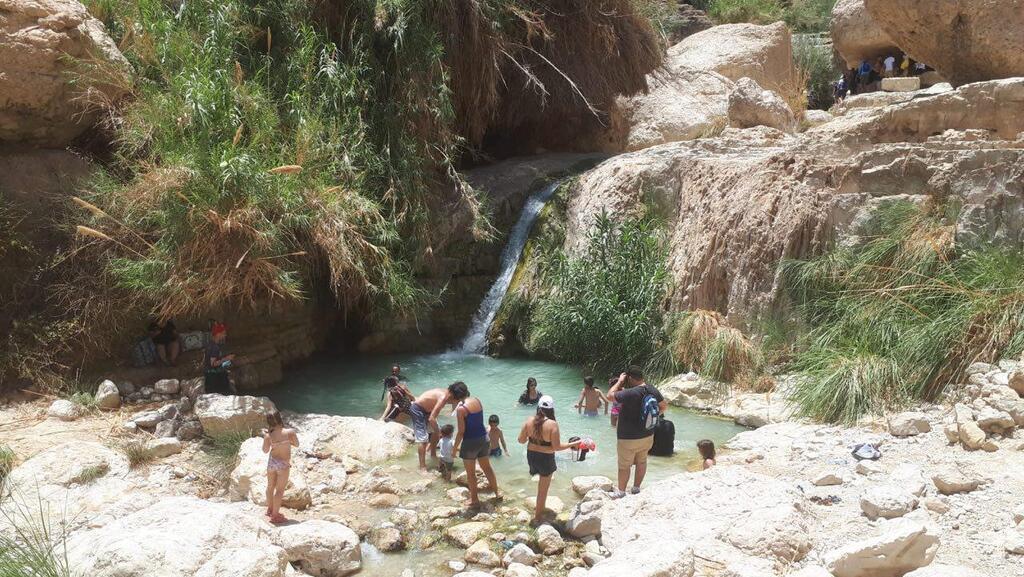

A fun dip for the whole family
(Photo: Matan Bogomolski, Nature and Parks Authority)
For those seeking a more exhilarating adventure, the journey can extend to the captivating Upper Nahal David route. From David's Waterfall, the path ascends the mountain, leading to the enchanting Shulamit Spring and the nearby Cave. This intimate cave boasts walls adorned with Shulamit hair plants, offering a perpetual cascade of water droplets. As you traverse this route, you'll have the opportunity to explore the springs and pools, all while savoring a mesmerizing vista of the Dead Sea.
The journey encompasses walking on a steep path and descending cliffs with the aid of iron steps. The trails within Nahal David are carefully managed but lack colored markings in the field. It is advisable to incorporate a visit to the nearby Chalcolithic temple remains into the route, as well as a stop at the Ein Gedi spring, where ancient storage ponds and a flour mill can be admired.


